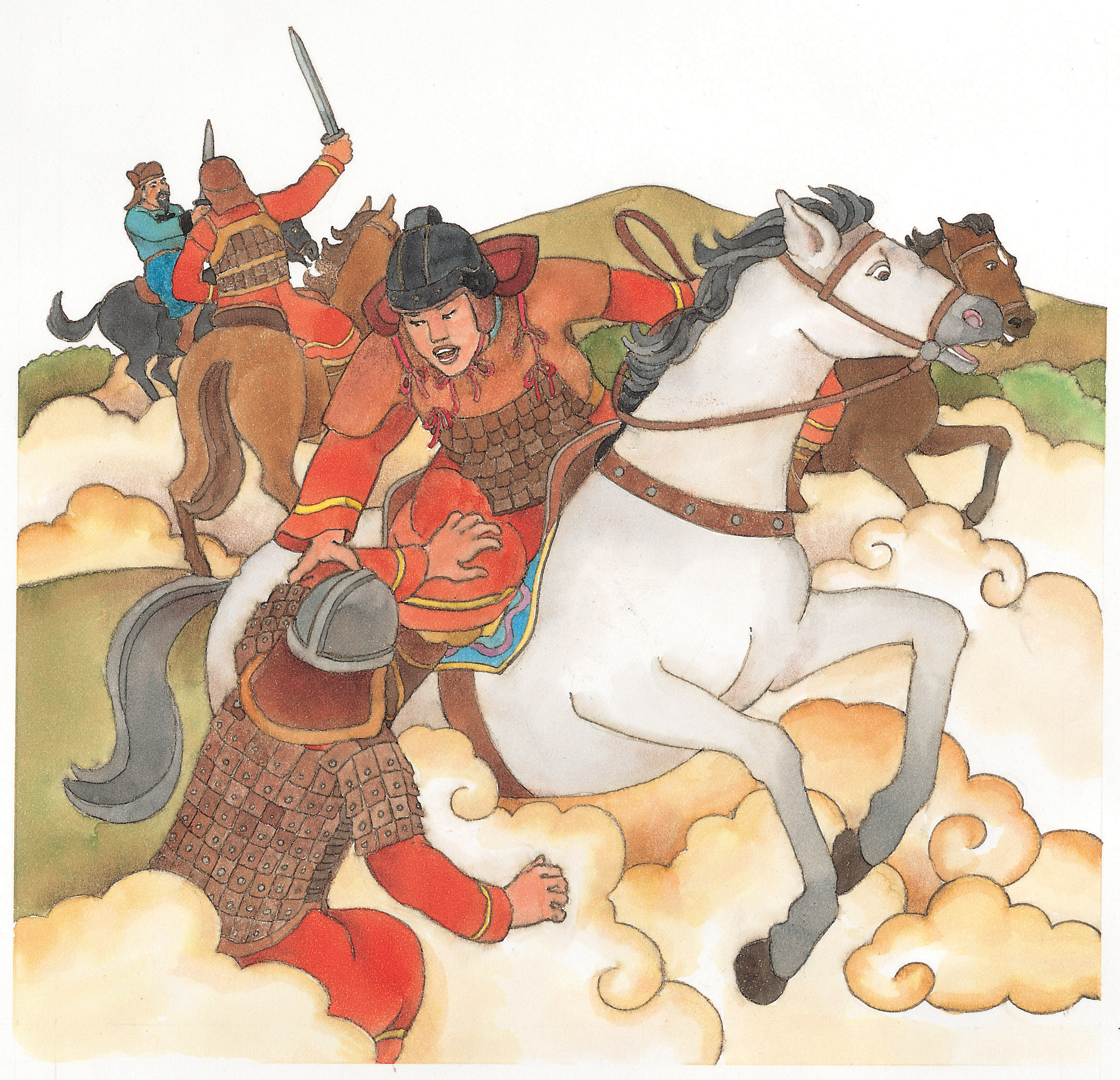Mulan, also known as Hua Mulan or Fa Mu Lan, was a legendary woman warrior of ancient China . Mulan’s story is told in the “Ballad of Mulan,” a famous Chinese poem first transcribed (put into writing) in the A.D. 500’s. Mulan is one of history’s most popular folk heroines and a symbol of bravery and hope. She has been the subject of books, motion pictures, operas, plays, and poems. The crater Hua Mulan on the planet Venus is named after her.
According to legend, Mulan was washing or weaving clothes when the imperial army came to her town. They recruited male soldiers from each family. Mulan’s father, named Huan Hu or Hua Hu, was old and unwell, and her brother or brothers were too young to join the army. With her parents’ blessing, Mulan disguised herself as a man so she could join the army in her father’s place. Mulan served in the army for more than a decade. She became highly regarded and was promoted to the rank of general. Mulan asked to return to her family instead of receiving an official post, and the emperor honored her request. When she changed into women’s clothing to return home, the other soldiers were surprised to discover that she was a woman. 
In some versions of the story, Mulan falls in love with an officer named Jin Yong. In some versions, Mulan arrives at a dangerous battle in women’s clothing and is met with the admiration of her troops. The woman warrior’s bravery inspires the troops, and they win the battle. After the emperor learns what happened, he wants to reward Mulan. She asks for a horse or camel in order to return home. Some stories say Mulan’s father dies while she is away. Mulan, lonely and grieving, then takes her own life. Other versions end with her marriage to Jin Yong. 
The “Ballad of Mulan” may be fictional. However, women warriors and military commanders did play a part in ancient Chinese history. If the story of Mulan was inspired by a real person, she likely lived during the Northern and Southern dynasties period (A.D. 420-589). Many details were added to the story during the Tang dynasty (A.D. 618-907), when stories about warrior women were popular.
In 1593, during the Ming dynasty , the playwright Xu Wei retold the story of Mulan in a play titled The Female Mulan or The Heroine Mulan Goes to War in Her Father’s Place. The novel Sui Tang Romance, published in 1695, during the Qing dynasty, also features Mulan. The novel sets Mulan’s life during the Tang dynasty. In it, Mulan becomes laotong (bonded sisters) with a rebel king’s daughter, a woman warrior named Dou Xianniang. The king betrays the emperor and is defeated. The laotong offer their lives to save the king’s life. Their loyalty to the king impresses the emperor, who spares their lives. The emperor gives Mulan money for her family. Mulan returns home to find her father has died and her mother has remarried. Mulan is summoned to become a concubine (mistress) of another ruler allied with the emperor. But she takes her own life rather than serve as a concubine.
In 1998, the Walt Disney Company released the animated motion picture Mulan, thus helping to spread the heroine’s fame worldwide. Disney released the live-action movie Mulan in 2020.
